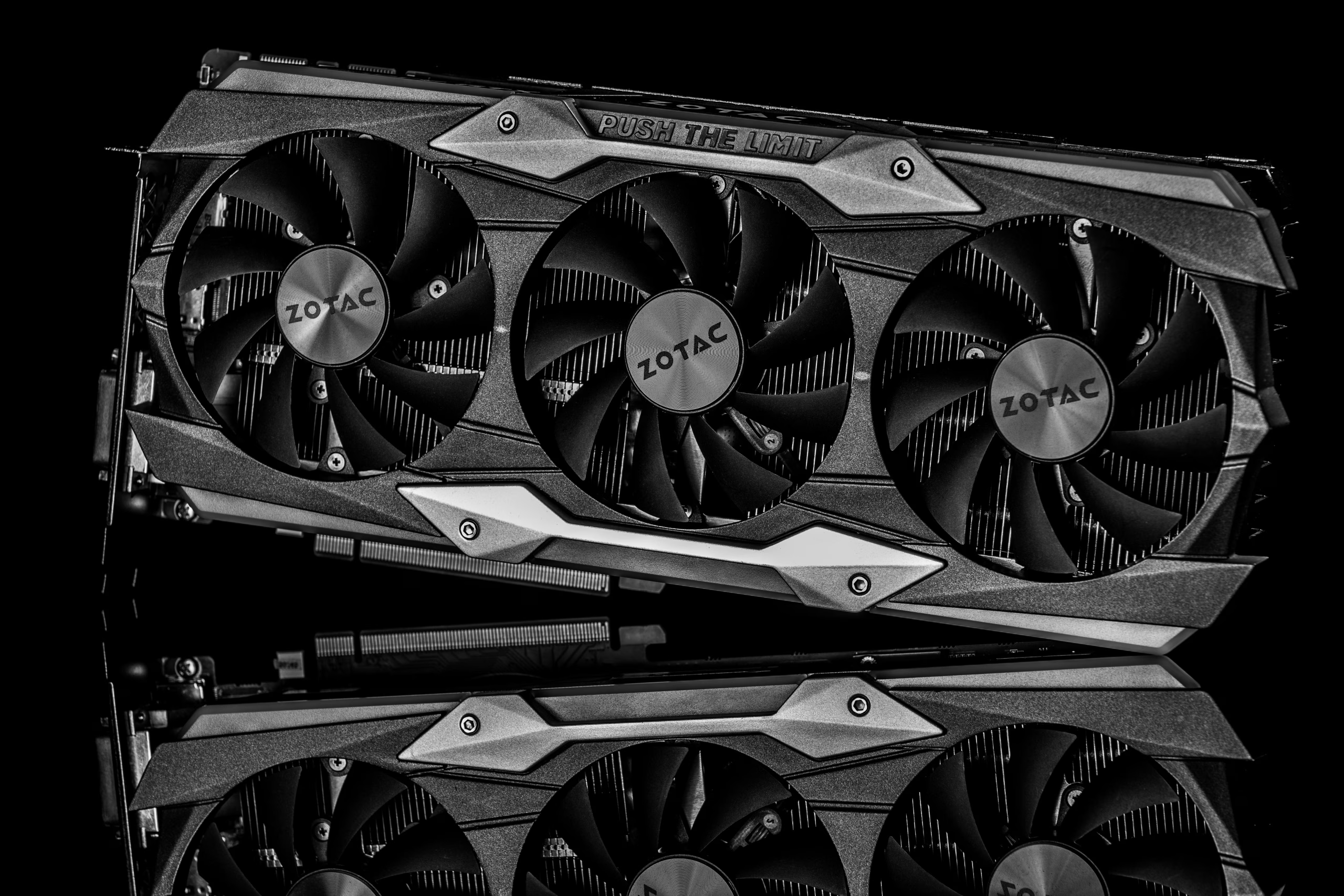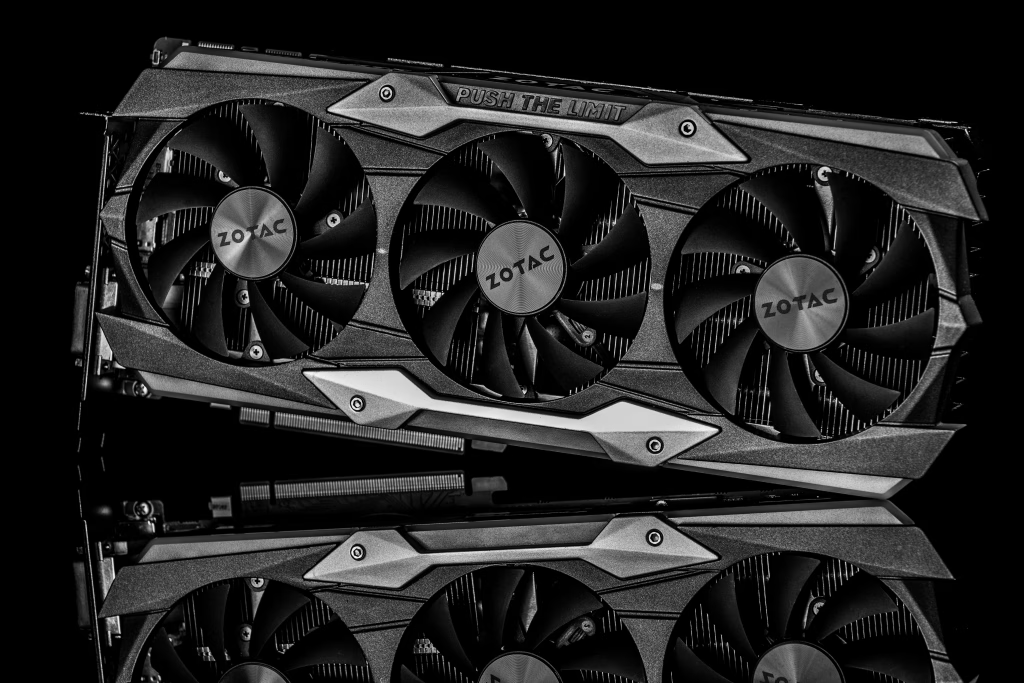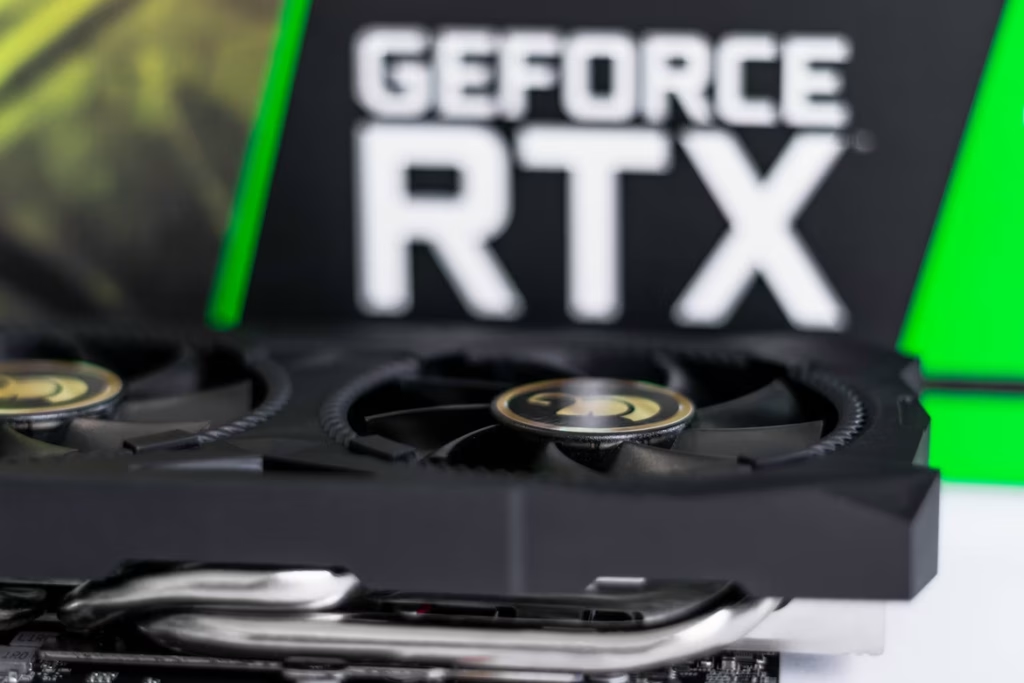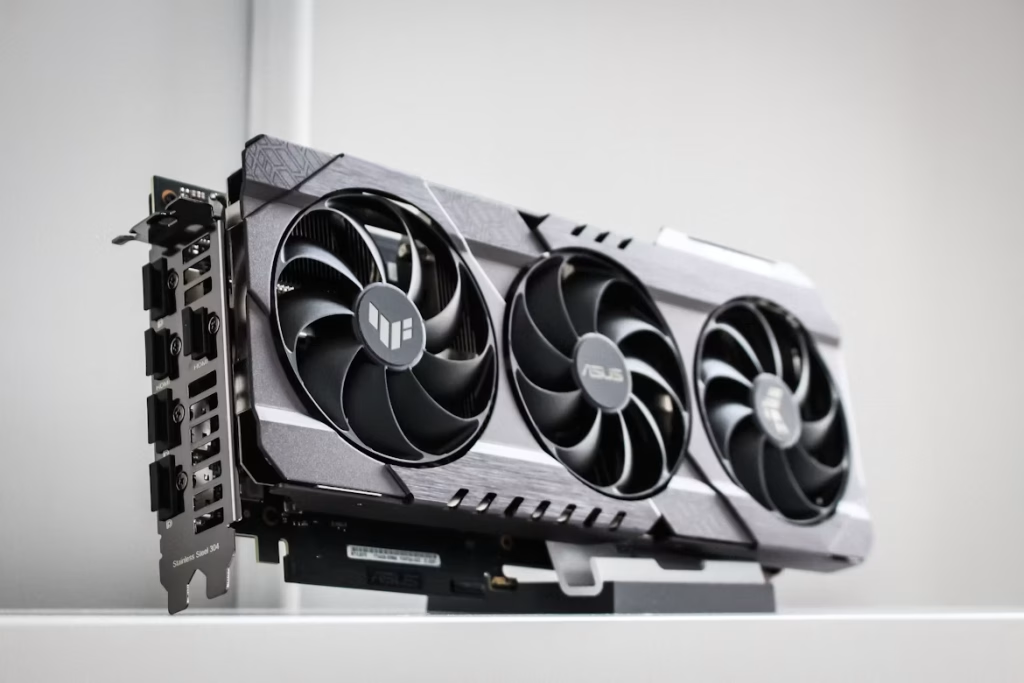Does graphics card brand matter? Is brand loyalty more important than performance? Let’s explore what actually matters when choosing a graphics card, from budget and VRAM capacity to plug-and-play compatibility, so you can make the right choice for your gaming setup.
Planning to buy a graphics card but not sure what to look for in your swanky new GPU? The graphics card is perhaps the most crucial component for performance when it comes to gaming. In fact, some gamers might argue that your GPU is more important than your CPU. With graphics cards becoming more technologically advanced with features like hardware tessellation and ray tracing, it is becoming more essential not just for gaming, but also for video editing, machine learning, artificial intelligence, and other computing-intensive tasks.
So it makes sense that as a newbie, you might want to spend some time understanding what exactly you should consider when choosing the right GPU for your precise needs. If you are looking for some helpful advice to make an informed decision, then here’s the truth about what really matters when shopping for your next GPU.
Does Graphics Card Brand Matter?
Here’s the uncomfortable truth – yes and no – but not in the way you think. Let’s start from the top. There are multiple companies that manufacture GPUs, including some Chinese brands that are trying hard to build a reputation. But in reality, there are only three primary brands that are actually valued by users worldwide – NVIDIA, AMD, and Intel.
While NVIDIA and AMD have a wide range of products in their catalogue, Intel has fewer options on offer. As for the Chinese GPU brands, let’s just say some stereotypes exist for a reason, and it’s best to avoid them if you value your hard-earned money. Regardless, choosing between NVIDIA, AMD, and Intel might be a bit more complicated than you think, as the GPUs from each brand tend to vary dramatically in terms of features, performance, and price. Each GPU is designed specifically by the brand to have certain in-built features that make it unique on an architectural level.
So NVIDIA, AMD, or Intel? Which one should you go for? Before we can answer that, let’s take a quick look at each of these GPU brands to gain a better understanding:
NVIDIA
NVIDIA is the most preferred brand and dominates the GPU landscape. Popular for their GeForce series, professionals and gamers alike are often NVIDIA loyalists due to their innovative features like DLSS (Deep Learning Super Sampling), frame generation, ray tracing, AI, deep learning, and upscaling. In fact, NVIDIA manufactures cards for both desktops and laptops, and you can find both premium and mid-range models.
In my experience, I have observed that NVIDIA offers superior performance and constantly introduces new technologies. Today, the best available options for you are the RTX 40-series or the RTX 50-series. However, as the RTX 40-series is low in inventory, it will probably cost you a lot more.
But you should be aware that not all of their models will give you your money’s worth, as some of their GPUs should simply be avoided.
AMD
AMD has carved its place as one of the leading GPU brands over the last few years, even though NVIDIA still holds more than 80% of the market. AMD’s Radeon series is highly popular among gamers, thanks to its competitive prices and excellent performance. And the fact is, AMD has a few tricks up its sleeve to prevent NVIDIA from having a complete monopoly over the GPU market. AMD’s recent lineups offer stiff competition and rival NVIDIA’s DLSS with their FSR (FidelityFX Super Resolution) technology.
However, I did not find the FSR3 Frame Generation to be that impressive, which is similar to my experience with NVIDIA’s frame generation technology. Regardless, AMD’s RX 7000-series cards offer top-notch performance in rasterization gaming, relatively more VRAM, and are more budget-friendly when compared to NVIDIA. The RTX 4060 Ti’s 8GB VRAM feels restricting, particularly since the 3060 had 12GB. However, the lower-tier RX 7600, RX 7700 XT, and RX 7800 XT show only marginal improvements over the previous 6000-series models. In contrast, the RX 7900 XTX and RX 7900 XT offer significant performance enhancements.
While both NVIDIA and AMD have their own pros and cons, AMD GPUs appear to be comparatively more affordable and seem to offer similar levels of performance as NVIDIA GPUs.
Intel
If NVIDIA is a shark in the ocean, Intel is a tiny fish in a lake. Although Intel may be a leading processor brand, when it comes to dedicated GPUs, it is still a newbie that needs to cover a lot of ground in order to catch up to NVIDIA and AMD. However Intel’s Arc series is focused on disrupting the mid-range GPU market by offering competitive options.
Although Intel’s Battlemage GPUs, specifically the Arc B580 and B570, are excellent and cost-effective, it still need to go miles before it can steal NVIDIA and AMD’s market share. If you are a budget-conscious buyer, then Intel can be a good option for you, but as of now, Intel’s market share is pretty much about zero percent. While the Arc A750 and Arc A580 deliver decent performance and are priced competitively, these graphics cards consume relatively more power. Even though the A750 can give stiff competition to the RTX 3060, Intel can’t hold a candle to the RTX 4060 and higher models.
But Intel uses a smart strategy to gain hold of the market. It aims for performance per dollar rather than outright speed. The Xe Super Sampling (XeSS) technology has an upscaling feature similar to DLSS and FSR, which improves frame rates while maintaining image quality. So overall, Intel is trying hard to position itself as a viable budget option in the GPU market.
Where Graphics Card Brand Actually Matters
Now that we have a good hold on the existing GPU brands in the global market, let’s get back to the question at hand – does graphics card brand matter?
Yes, brands do matter, but not exactly the way you think. We, as consumers, are programmed to perceive brands in a certain way through marketing, advertising, and social media. Companies like NVIDIA, AMD, and Intel actually manufacture the GPU chips, while brands like ASUS, MSI, EVGA, and Gigabyte just add their coolers on top and tweak the default settings.
This is why there is minimal difference in performance between brands that use the exact same GPU chip, about 2-5%. The difference is so negligible that it won’t even catch your eye during gameplay. Think of it like the difference between 97 FPS and 100 FPS. However, you will notice the difference when it comes to build quality, noise levels, factory clocks, cooling performance, warranty, and customer support.
I tested an ASUS TUF RTX 4070 against a basic Zotac model. Same GPU chip, but the ASUS card ran 18°C cooler under load. Moreover, while ASUS ROG graphics cards tend to be cooler but more expensive, MSI Gaming X cards create a perfect balance between performance and price. I’ve also seen cheap graphics cards develop artifacts within 18 months of purchase, while premium models from ASUS, MSI, and EVGA typically last 4-5 years without issues.
So the best thing you can do is buy the most affordable GPU from a reputable brand that fits your needs, budget, and case, and has decent reviews. It’s better to save your money for more VRAM instead.
Does Graphics Card RAM Size Matter?
Heck, yeah! This is where you should focus your attention and budget. VRAM (Video RAM) is the actual game changer here. The dedicated memory on your graphics card is called VRAM. It helps in storing visual data, models, and textures. The more VRAM you have, the higher resolutions you will have, along with more texture quality and better performance in memory-intensive tasks. When you run on low memory, your performance will suffer. Period.
If you are new to gaming, here’s what you need to know:
- 1080p gaming: 6GB minimum, 8GB preferred
- 1440p gaming: 8GB minimum, 12GB preferred
- 4K gaming: 12GB minimum, 16GB preferred
I found this out the hard way as my old GTX 1060 3GB simply could not handle newer games, leading to stuttering. Although the GPU chip was still good enough, the 3GB VRAM simply could not keep up. So my advice to you is get more VRAM – more than what you think you will need. Games will keep improving and become more demanding. And you won’t be able to upgrade VRAM later.
Here’s a quick tip: Use MSI Afterburner or GPU-Z to monitor VRAM usage while gaming. You might face performance issues in demanding scenes if you’re constantly using over 80% of available VRAM. If you have more VRAM, you will get smoother transitions and consistently high-quality visuals.
Factors to Consider When Choosing the Right Graphics Card
Now, if you are ready to buy your new graphics card, then here are a few more things that you need to be aware of:
Resolution
What is your preferred resolution for gaming? 1080P, 1440P, or 4K? The higher the resolution, the more screen space you will have. However, make sure your monitor matches your preferred resolution before buying a higher resolution GPU like the RTX 5070 Ti. This will help you avoid wasting money, time, effort, and performance. You also need to pay attention to the monitor refresh rates.
If you get a budget GPU for a high-end display, then it will not yield the results you expect. However, you can easily pair a 60 FPS GPU with a 75Hz or 144Hz monitor.
Here is a quick breakdown of resolutions:
1080P Resolution
If you are a casual gamer, the NVIDIA RTX 4060, AMD Radeon RX 7600, or Intel Arc B580 are your best options as these perform well on most AAA games at medium settings, while being easy on your pocket.
1440P Resolution
If you are a serious gamer who prefers 1440P, then the RTX 5070 Ti or RX 9070 XT will be ideal for you. The RX 7800 XT is also a solid option, but only if you can get it at MSRP.
4K Resolution
If you love 4K gaming, then only the most powerful graphics card will satisfy your system’s hunger. The RTX 5080 and RTX 5090 are the best options available for you, even if they come with a higher price tag. You can also go for the RX 7900 XTX, but there may be a few restrictions in ray tracing.
Budget
There are loads of graphics cards out there available at different price ranges. So, decide on a clear budget first and make sure to stick with it. Focus on finding the perfect balance between budget and performance. While high-end graphics cards, like the RTX 5090 or RTX 5080, are obviously better, mid-range options, such as the RTX 5060 Ti, RX 9070 XT, or RTX 5070, should not be overlooked, as these can help you enjoy your fav games without hurting your bank account.
Power Supply
Your graphics card needs clean, stable power. So don’t go cheap here. Make sure your power supply (PSU) can handle your GPU’s requirements. If you have the RTX 4070, which needs 200W, and your CPU uses 100W, then you need to add an additional 100W for everything else. That’s 400W minimum, so buy a 650W power supply for headroom. Make sure to purchase supplies from trusted and reputable brands.
You know your expensive graphics card deserves better than a shady, no-name PSU that might fry everything when it fails.
Cooling Considerations
Not all GPU coolers work equally. While two-fan graphics cards can work just fine, three-fan models are cooler and quieter. However, these are more expensive and require more space. Blower-style cards with a single fan are also a great option if you have a small case with poor airflow. As these have vents at the back, the heat is directed outside and doesn’t stay trapped inside your case. Water-cooled graphics cards are a bit fancy for my taste, as they are too expensive and often lead to unnecessary problems.
Are Graphics Cards Plug and Play?
Mostly, yes. But, it’s more like – plug, pray, and troubleshoot. Installing a new graphics card these days is a lot easier than it used to be. Here’s what you need to do –
- Download the latest GPU drivers
- Create a Windows restore point
- Shut down your PC
- Unplug all cables from the computer
- Locate the top PCIe x16 slot
- Align the graphics card carefully with the slot
- Press down firmly until it clicks into place
- Connect all required power cables
- Connect the monitor to the graphics card
- Turn on the system and boot to the desktop
- Uninstall old graphics drivers using DDU
- Install the downloaded GPU drivers
- Restart the system when prompted
- Run basic stability tests
- Configure graphics settings in games
So, are graphics cards plug and play? Most of the time, it will start working right off the bat. But there may be times you will face some hiccups. From what I have seen, 90% of graphics cards work perfectly immediately after installation. However, there is still that 10% which requires troubleshooting. Issues can range from minor driver issues to complete system incompatibility.
While these are good odds, it is always safer to keep your old card handy just in case. Why? When things go wrong, they get absolutely bonkers. Display artifacts, system crashes, black screens, and even complete failure to boot. These are not simple issues that can be fixed quickly, and you may even need professional help to diagnose and fix them. Installation issues can arise when you –
- Pair an older system (5+ years) with new cards
- Use cheap or unbranded power supplies
- Install a GPU in cramped casings with poor airflow
- Use a system with multiple graphics cards
- Use a highly modified or overclocked system
The smartest thing you can do here is manage your expectations. Yes, modern graphics cards are mostly plug-and-play, but you also need to pay attention to compatibility issues. Be prepared for troubleshooting, especially if you have an older system or budget components.
Takeaway
If you are gearing up to buy your first graphics card, then all this might feel a bit overwhelming. But this is actually simple and very important once you understand the basics of GPU shopping. While brands do matter, budget, compatibility, and performance matter more. Buy from trusted brands, get enough VRAM for your resolution, focus on cooling performance, and make sure your power supply can handle the load. That’s it. Everything else will fall into place.
Your games won’t care whether your RTX 4070 came from ASUS or MSI. They’ll care whether you have enough VRAM to run properly and stable power to avoid crashes.
Shop smart. Your wallet will thank you.





